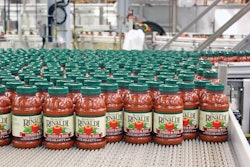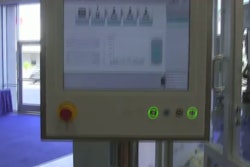As the economy improves, packagers are under the gun, using all their planning skills to take care of business while utilizing the equipment already on the floor, and perhaps contemplating new technology. Here’s what they are discovering is available in liquid filling:
1. Shorter lead times: Short build times are the norm as the economy recovers, as most packagers are dealing with multiple product lines, projects, and deadlines. They are searching for suppliers that can deliver a full packaging line with the shortest build time. Budget is still a concern, but the growing demands, in particular, of the food and beverage business dictate a fully integrated solution on a tight deadline.
2. Flexibility and adaptability: Packagers continue to look for flexibility in machinery so they can package products with a wide range of containers, caps, labels, sleeves, and products. They want machines that can handle different size/shape containers as a standard feature, without additional add-ons or a custom solution.
3.Quick changeovers: SKU proliferation and retailers that order at the last minute to avoid holding stock have driven the need for faster changeovers in recent years. This has led to the development of technologies for quicker cleaning, eliminating pistons, cylinders, and valves that have to be removed, cleaned, and reinstalled. Instead, such components can be cleaned with hot water or steam straight through the filling nozzle. On in-line machines, there’s also a trend favoring universal change parts, reducing or in some cases even eliminating the need to remove parts for a size change.
4. Compliance with the Food Safety Modernization Act (FSMA): Cleanability per FSMA is a big concern for filler machine builders. Fillers have a tendency to have complex “fluid pathways” due to the many pistons, pumps, and check valves inherent in their design. Cleanability goals are quick disassembly with no tools needed, disassembly of hoses, etc., and no hidden fluid pathways.
5. Multiple-function machines: Packagers are asking for machines that can perform multiple functions beyond that of the traditional monobloc filler/capper. One example cited was a machine that orients bottles and caps to one another as well as to the final case-packing system. CPGs also want more equipment flexibility to accommodate a continually expanding range of packaging formats, including a wider variety of container shapes, sizes, material structures, and closure mechanisms. Five years from now, some machine builders predict more complexly integrated machines with software adaptations that can handle maybe four to six operations (for example, filling, capping, labeling, coding, cartoning, and casing) in one system. Also predicted are multiple production cells—if one module fails, you can take it out and replace it without having to replace the entire system.
Liked this article? Download the entire playbook here.

























